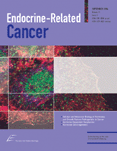| HOME | HELP | FEEDBACK | SUBSCRIPTIONS | ARCHIVE | SEARCH | TABLE OF CONTENTS |
|
|
||||||||
REVIEW |
1 Department of Molecular and Cellular Oncology, The University of Texas M.D. Anderson Cancer Center, Houston, TX 77030, USA
2 Department of Hematology-Oncology, Chang Gung Memorial Hospital, Kaohsiung Medical Center, Kaohsiung, Taiwan
3 Graduate Institute of Clinical Medical Sciences, Chang Gung University, Kaohsiung, Taiwan
4 The Center for Menopause and Reproductive Medicine Research, Chang Gung Memorial Hospital, Kaohsiung Medical Center, Kaohsiung, Taiwan
5 Graduate School of Biomedical Sciences, The University of Texas Health Science Center at Houston, Houston, TX 77030, USA
6 Division of Urology, Department of Surgery, Tri-Service General Hospital, National Defense Medical Center, Taipei, Taiwan
(Requests for offprints should be addressed to M-C Hung; Email: mhung{at}mail.mdanderson.org)
Breast and prostate cancer are the most well-characterized cancers of the type that have their development and growth controlled by the endocrine system. These cancers are the leading causes of cancer death in women and men, respectively, in the United States. Being hormone-dependent tumors, antihormone therapies usually are effective in prevention and treatment. However, the emergence of resistance is common, especially for locally advanced tumors and metastatic tumors, in which case resistance is predictable. The phenotypes of these resistant tumors include receptorpositive, ligand-dependent; receptor-positive, ligand-independent; and receptor-negative, ligand-independent. The underlying mechanisms of these phenotypes are complicated, involving not only sex hormones and sex hormone receptors, but also several growth factors and growth factor receptors, with different signaling pathways existing alone or together, and with each pathway possibly linking to one another. In this review, we will discuss the potential mechanisms of antihormonetherapy resistance in breast and prostate cancers, especially focusing on the similarities and differences of these two cancers. We will also discuss novel agents that have been applied in clinical practice or with clinical potential in the future.
This article has been cited by other articles:
 |
J. M Day, H. J Tutill, A. Purohit, and M. J Reed Design and validation of specific inhibitors of 17{beta}-hydroxysteroid dehydrogenases for therapeutic application in breast and prostate cancer, and in endometriosis Endocr. Relat. Cancer, September 1, 2008; 15(3): 665 - 692. [Abstract] [Full Text] [PDF] |
||||
 |
M. Mimeault, P. P. Mehta, R. Hauke, and S. K. Batra Functions of Normal and Malignant Prostatic Stem/Progenitor Cells in Tissue Regeneration and Cancer Progression and Novel Targeting Therapies Endocr. Rev., April 1, 2008; 29(2): 234 - 252. [Abstract] [Full Text] [PDF] |
||||
 |
A. M. Trauernicht, S. J. Kim, N. H. Kim, and T. G. Boyer Modulation of Estrogen Receptor {alpha} Protein Level and Survival Function by DBC-1 Mol. Endocrinol., July 1, 2007; 21(7): 1526 - 1536. [Abstract] [Full Text] [PDF] |
||||
| HOME | HELP | FEEDBACK | SUBSCRIPTIONS | ARCHIVE | SEARCH | TABLE OF CONTENTS |